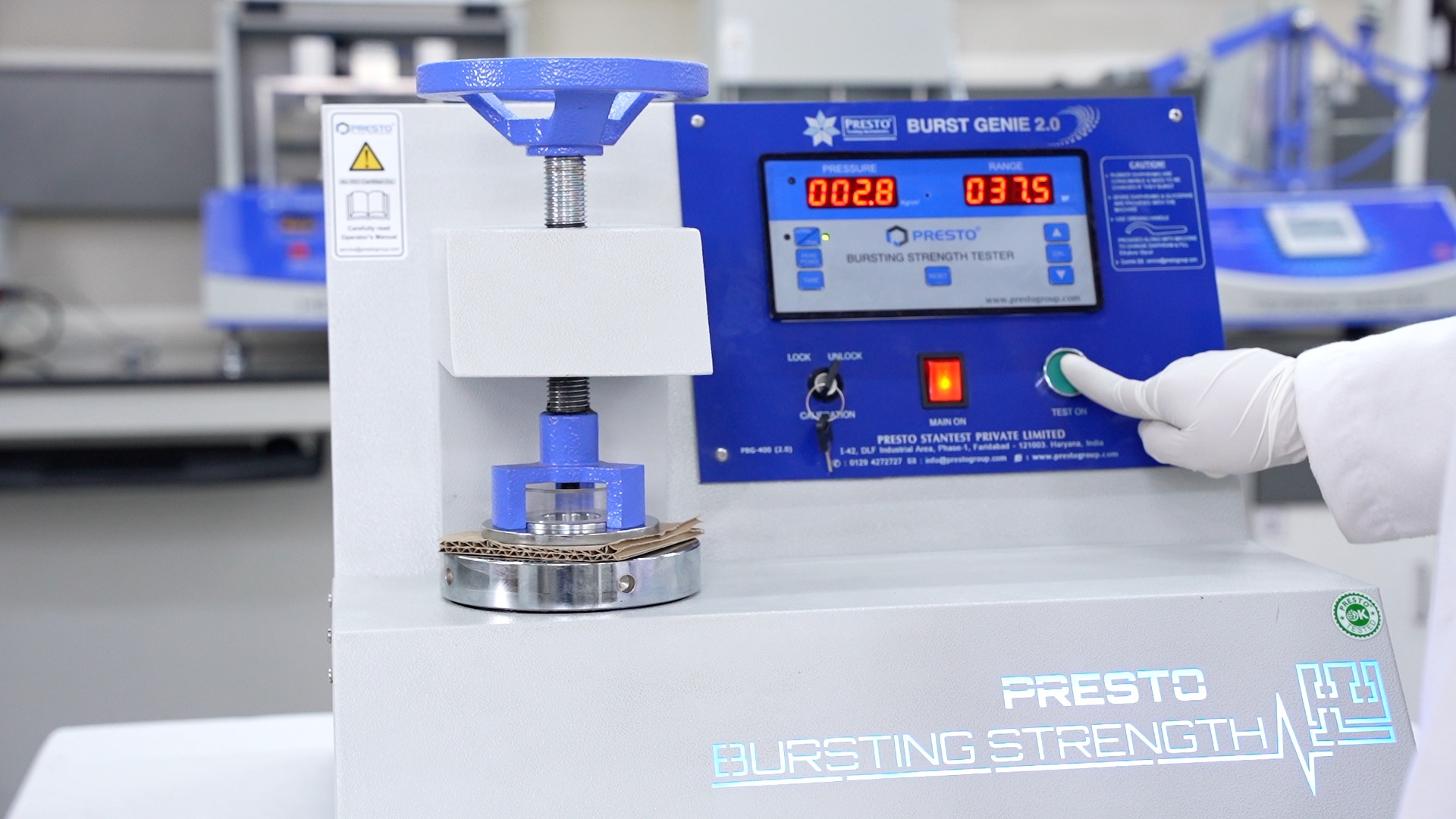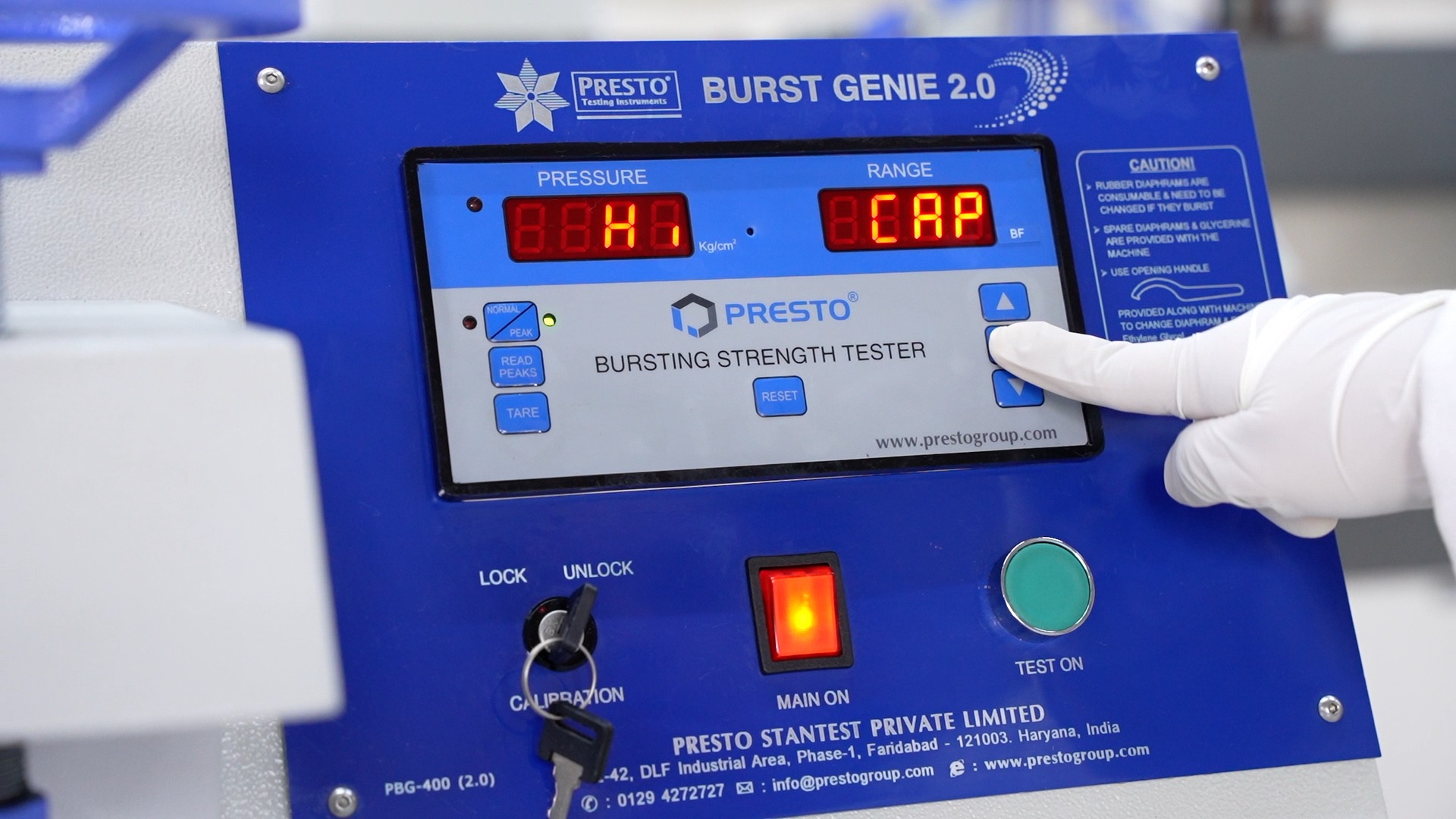
In modern competition, packaging materials, textiles, papers, and leather should withstand external stresses. Think of receiving a shipment full of goods that were badly damaged only because its packaging was too weak, or a textile product that tears easily under the slightest pressure. Such a result is rather disappointing and may even mar the name of the brand, lead to expensive returns, or even create safety hazards. This is where the right and reliable bursting strength testing comes in.
A bursting strength tester is a testing machine designed to determine the strength and durability of materials, including paper and cardboard, textiles and leather, and packaging materials. It's a pressure resistance test made to determine the material's resistance until bursting and the kinds of stresses that similar materials undergo when handled, stacked, or in transit.

Accurate testing for burst strength is critical to ensure that quality is not compromised due to product failures. Mistakes in testing lead to a whole lot of other issues:
Preparation and calibration steps make great demands on details achieved. Here are some important factors:
The test for material to be tested should be conditioned in a controlled environment to stabilize the properties of materials before evaluation. Standardized temperature and humidity guidelines set by industries prevent the results from variabilities since the chemical composition of a material is determined by factors like temperature and humidity.
Samples should be prepared in such a way that their sizes and thickness are the specific ones requested. Avoid any wrinkle or folding on the sample so that the readings produced are genuine strength of the material being tested.

It should be calibrated periodically. The small errors during calibration make the measurements deceptive and may give incorrect strength evaluations of the material. Calibration in due course ensures accurate readings and reflects the real strength of the material.
If cleaned and checked often, it does not happen that the instrument or device malfunctions by acquiring sedimentation and wear that can alter the outcomes. Maintained equipment promises to function the same every time.
The high-quality testing equipment supplied by Presto guarantees reliability, accuracy, and efficiency in consistently performing the burst strength test. Having years of experience in the business, Presto has designed all its equipment so that it can meet the standards of various industries. It would be for quality-conscious industries to choose Presto to provide them with the necessary support and advanced technology at every stage of the testing process.
The proper procedure should be followed to obtain valid burst strength readings. Here is the summary of proper ways for the conduct of the burst strength test:
A correctly positioned sample inside the Bursting Strength Tester must be placed. Ensure it is placed centrally, and held in the machine. Samples that are not correctly placed would result in some areas getting non-uniform pressure, while others do not, which could make the test readings invalid.
When it is important to acquire accurate testing, pressure needs to be placed consistently and incrementally. Sudden or non-uniform pressure could lead to inaccurate readings, and consistent incremental pressure may obtain a better estimate of the burst strength. To achieve this, the force to be applied has to reach the breaking point of the sample; hence, it must mark the point of failure precisely.

Standard procedures, such as ASTM and ISO standards for testing burst strength, must be followed. Those that standardize consistent procedures mean results will be reliable, comparable, and in line with industry standards. Adherence to these principles guarantees that the information accumulated is valuable for going with quality control choices.
To avoid common errors when conducting burst strength tests, accuracy will come out and quality results will ensue. Here are some pitfalls to watch for:
Failure to calibrate the tester periodically might cause inaccurate readings. Maintenance is also essential since dirt within the components can disrupt the accuracy of the tester.
The samples that have been improperly conditioned or appear visibly damaged can have a large impact on the accuracy of the results in terms of burst strength testing. Conditioning ensures that the sample is placed under the same conditions at the time of testing.
The standardized test procedures may vary at certain times so the results obtained could be unreliable or even inconsistent.
Calibration is a must for every single piece of equipment that is done frequently, according to the frequency of using the equipment and also according to the manufacturer's specifications to ensure accuracy.
Ideal condition varies from industry to industry standards but generally involve a controlled temperature and humidity as set out in ASTM and ISO recommendations.
Proper positioning will deliver uniform pressure that yields accurate and consistent results.
For high-quality testing instruments, rely on the valuable equipment from Presto, that guarantees reliability and advanced pieces of equipment, especially designed for accuracy and consistency in every test.
Phone: +919210903903
Email: info@prestogroup.com
Our latest product catalogue cum company profile is now
available to download. Where should we send your FREE copy?
